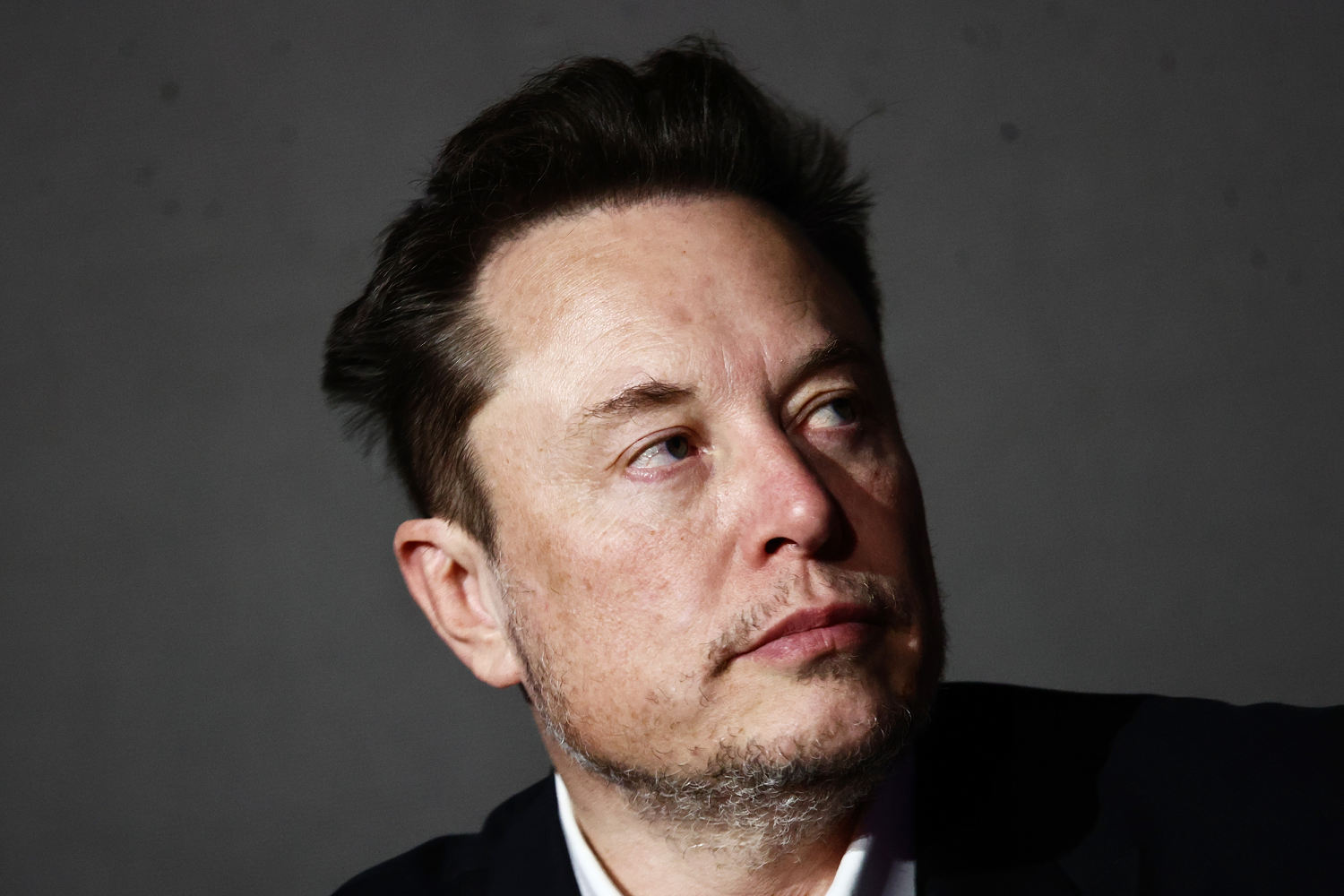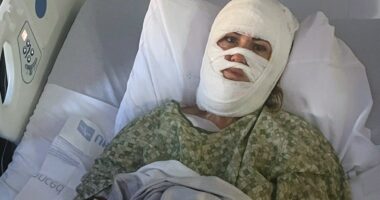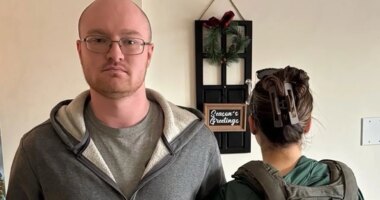Share this @internewscast.com

It wasn’t the first tiny device to be implanted in a human brain. Still, Elon Musk’s announcement on Monday turned heads in the small community of scientists who have spent decades working to treat certain disabilities and conditions by tapping directly into the body’s nervous system.
“Getting a device into a person is no small feat,” said Robert Gaunt, an associate professor in the department of physical medicine and rehabilitation at the University of Pittsburgh. “But I don’t think even Elon Musk would have taken on a project like this if it were not for the research and demonstrated capability over decades in neuroscience.”
Musk’s announcement was sudden and offered little information beyond the news itself: “The first human received an implant from @Neuralink yesterday and is recovering well. Initial results show promising neuron spike detection.”
Many scientists applauded Neuralink’s announcement, while also cautiously noting that the company’s clinical trial is in very early stages and not much information has been released publicly. Still, researchers said Neuralink has made significant gains and is doing exactly what startups are good at: taking what has been learned through basic science and trying to make a real, viable product.
It’s too soon to know if Neuralink’s implant will be effective in humans, but the company’s announcement is an “exciting development,” said Gaunt, whose own work focuses on using implants — devices known as brain-computer interfaces — to restore motor control and functions like people’s sense of touch.
He said Neuralink’s new milestone is jump-starting an industry that has already undergone rapid advancement in the last 15 years.
The first brain-computer interface was implanted into a human in the late 1990s, research that was led by a pioneering neurologist named Phil Kennedy.
The idea was that these devices could tap into the brain circuitry that remains intact after injury to perform basic movements and functions. For instance, when a person thinks about moving their hands or watches someone else move their hand, a lot of the same neurons in the brain are active as if they performed the movement themself, said Jennifer Collinger, an associate professor in the department of physical medicine and rehabilitation at the University of Pittsburgh.
“You can find patterns of activity in the neural data that correlate with those movements, so you can essentially flip that relationship around to then give them control over the actual movement,” she said.
In 2004, a tiny device known as the Utah array was implanted in a human for the first time, allowing a paralyzed man to control a computer cursor with his neural impulses. The device, invented by Richard Normann at the University of Utah, looks like a small chip with thin spikes that are actually dozens of tiny electrodes. The array is designed to attach to the skull through an opening in the skin.
Using the Utah array, scientists have been able to demonstrate how brain-computer interfaces can help people control a robotic arm with their mind, stimulate their own muscles and limbs, use computers and other external devices, and even decode handwriting and speech.
“All of that was a really important proof of concept to show that this technology could be useful,” said Collinger, whose own work focuses on restoring arm and hand function to allow patients with paralysis not just to move these appendages, but also to use them to manipulate objects and perform more skillful movements that incorporate tactile signals and other forms of sensory feedback. The idea is to enable a wider range of functions necessary for day-to-day life.
Enter Neuralink. Musk’s startup, along with other similar private ventures such as Synchron and Precision Neuroscience, are essentially taking what has been learned over decades to make brain-computer interfaces more practical for more patients.
Neuralink won approval last year from the Food and Drug Administration to conduct its first human clinical study. Details about who was selected and the procedure to implant the device that Musk said took place Sunday were few and far between, but the company has been developing a brain implant that would allow people, such as patients with severe paralysis, to control a computer, phone or other external device using their thoughts.
The startup has already made several big leaps forward.
Unlike the Utah array, Neuralink’s device is fully implantable, which means patients could eventually be less constrained — most implants require people to perform activities in a controlled lab setting.
“That was a huge engineering challenge,” Gaunt said. “That was the sort of thing that academics and other people had de-risked over many decades, but it really took a difficult and concerted engineering effort to actually build it.”
There have been some bumps along the way. The company was mired in controversy after activist groups and internal staff complaints alleged that Neuralink mistreated some of the animals used in experiments. A federal investigation did not turn up evidence of any violations beyond an “adverse surgical event” in 2019 that the company reported itself, according to Reuters.
Neuralink is not the first to put a fully implantable brain-computer interface in a human patient, but Gaunt said the company has improved how much these devices can record by leaps and bounds.
Neuralink also uses innovative robotic surgery, rather than a specialized neurosurgeon, to implant the device.
“That’s way different from what people have done before,” said Sergey Stavisky, an assistant professor in the department of neurological surgery at the University of California, Davis, and co-director of the UC Davis Neuroprosthetics Lab.
Stavisky said automating the procedure with a robot could make it more efficient and effective down the road.
“You can put more of them in, you can put them in quickly, you can avoid blood vessels,” he said, “but it’s also just hard and new, and you have to show that the robot is safe.”
Demonstrating safety will be one of the primary functions of Neuralink’s clinical trial. In the coming months, the startup will need to show that its device can function with no serious adverse effects.
Whether the implant works as intended also remains to be seen. In his announcement on X, Musk said the patient “is recovering well” and that initial results “show promising neuron spike detection.”
Without data, it’s difficult to know what that means, but Gaunt said it likely indicates that the electrodes are in place, a neuron nearby has fired and the implant can essentially detect that activity.
“It basically means that, at least on some level, it’s working,” he said.
Musk said the early clinical trials will aim to treat people with paralysis or paraplegia. If the device works, it could one day be used to address a range of ailments.
Dr. David Brandman, a neurosurgeon who co-directs the UC Davis Neuroprosthetics Lab with Stavisky, already uses fully implanted devices to treat patients with Parkinson’s disease, seizures and abnormal pain.
When it comes to medical needs, brain-computer interfaces can make a huge impact, he said, including for stroke survivors and patients with spinal cord injury, paralysis and amyotrophic lateral sclerosis (ALS).
Beyond clinical applications, it’s easy for the imagination to run wild with sci-fi notions of bioengineering. Musk himself has stoked those fantasies, saying in 2022 that he plans to get one of Neuralink’s implants someday.
Many scientists, however, think that kind of thinking is too far off in the distant future — and not very practical.
“I think it’s really too soon to be talking about that,” Brandman said. “There are people in need, and any emphasis on ‘what if’ and ‘what could happen’ is doing a disservice to people that need a device.”
And while the idea of brain-controlled devices may suggest the potential for augmenting human abilities, scientists agree that so far there has been no demonstration that these implants can improve functions over what a nondisabled person can do.
“The idea that these devices will allow us to achieve any sort of superhuman ability is just science fiction at this point,” Gaunt said.
Still, Neuralink’s clinical trial represents a big development for the field of neuroscience and bioengineering. And rather than overshadow their own efforts, Gaunt and others said it’s natural for industry to step in and build upon what the academic world has achieved.
“Universities and academic labs are places that really excel in breaking brand-new ground, going places nobody’s ever gone before and trying things that are way too risky for companies and investors to put their money into,” Gaunt said.
Once brain implants demonstrated real capabilities, for instance, private companies started stepping in with resources and capital that dwarf what’s available through research grants to build a commercially viable product, he added.
If anything, Gaunt said Neuralink’s early successes are a testament to the importance of funding basic scientific research.
Where all the industry developments leave those in academia, though, could be tougher to predict.
Stavisky said it’s up to the scientific community to figure out the next frontier in the field, likening the process to surfing ahead of the wave and pushing science forward in a way that may again translate to commercial developments in the future.
That doesn’t necessarily mean all the flashy headlines and attention on Musk and Neuralink don’t have an effect, Gaunt said.
“Every once in a while when these sorts of things happen, I do wake up with an existential crisis,” he said, “but then reality sets in, and I think about how there will always be challenges and basic science that needs to be solved.”














